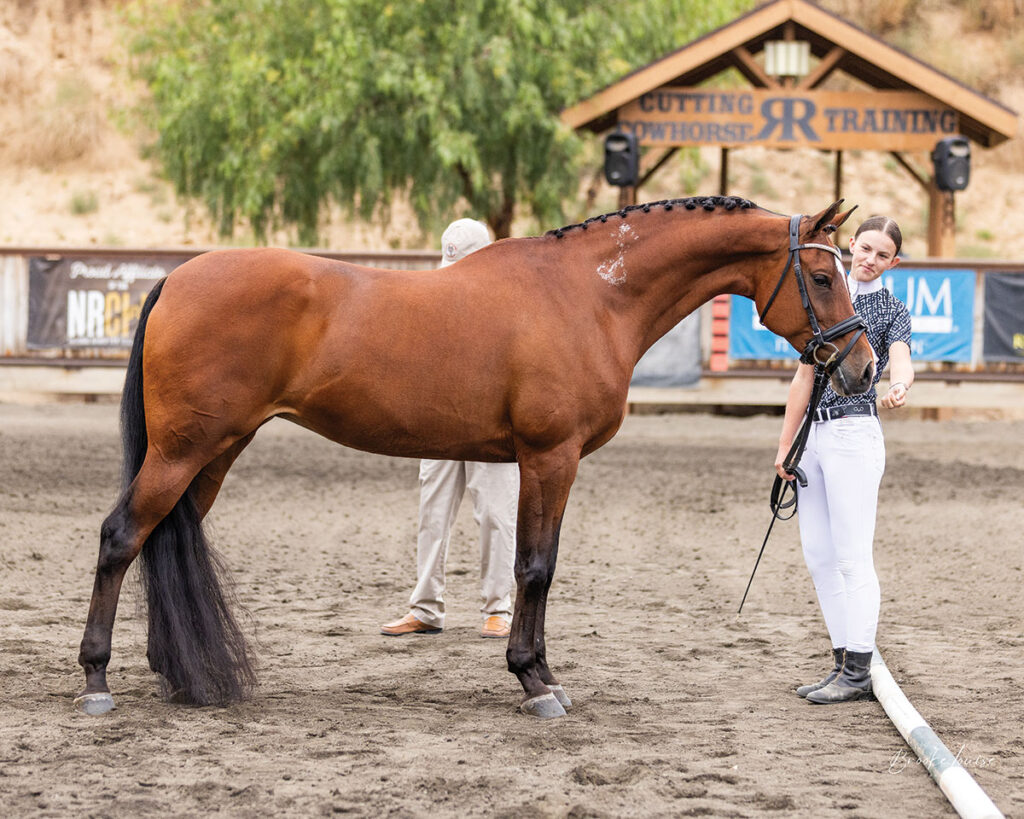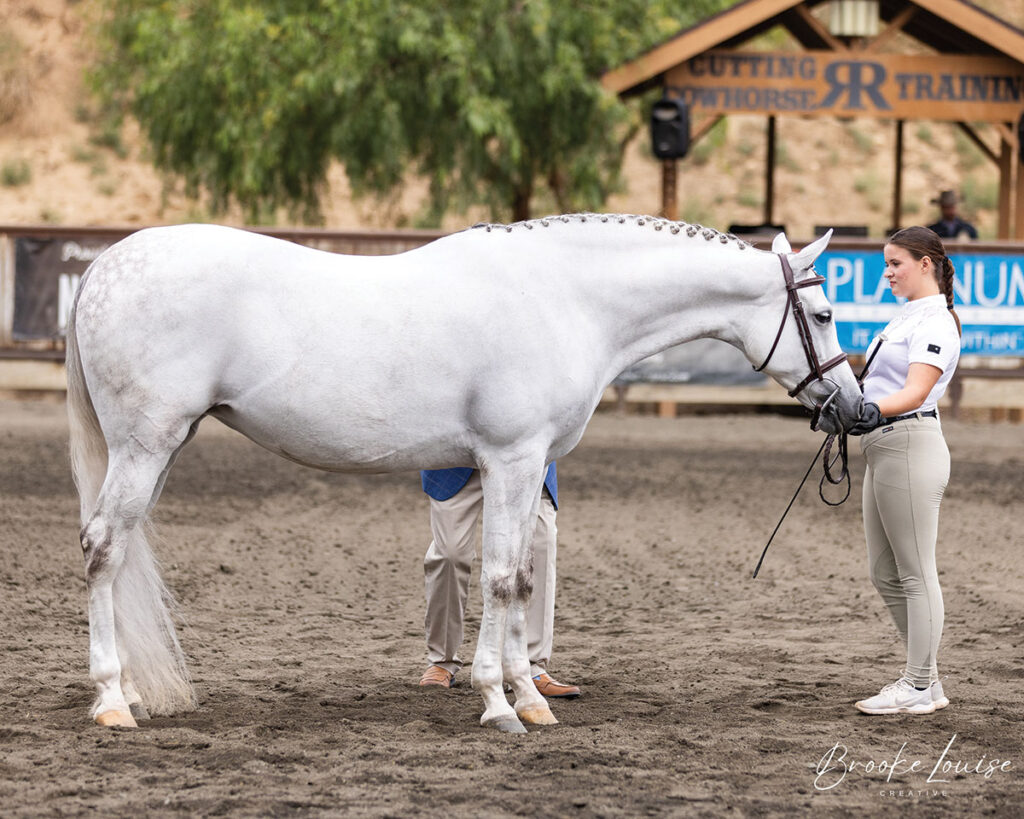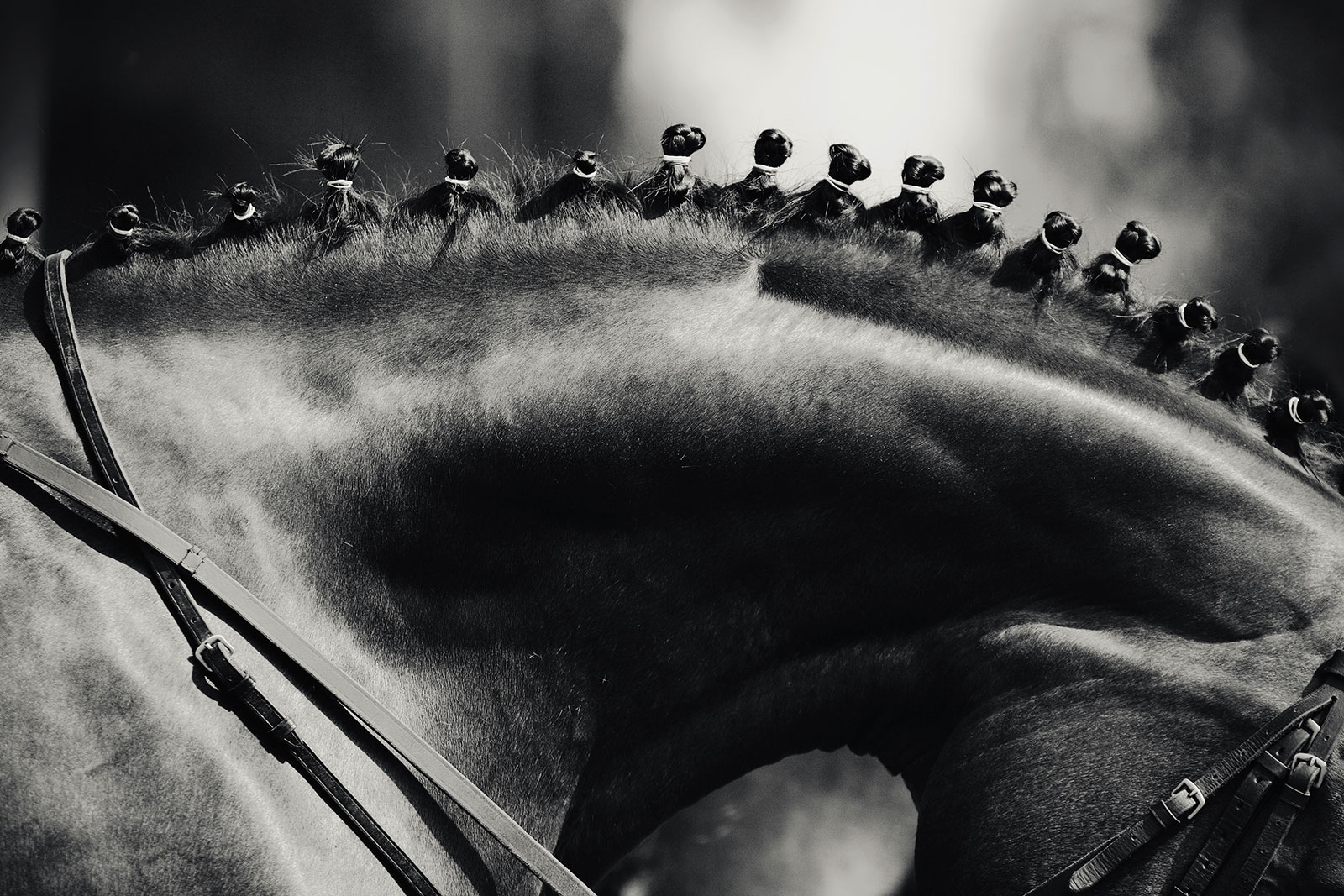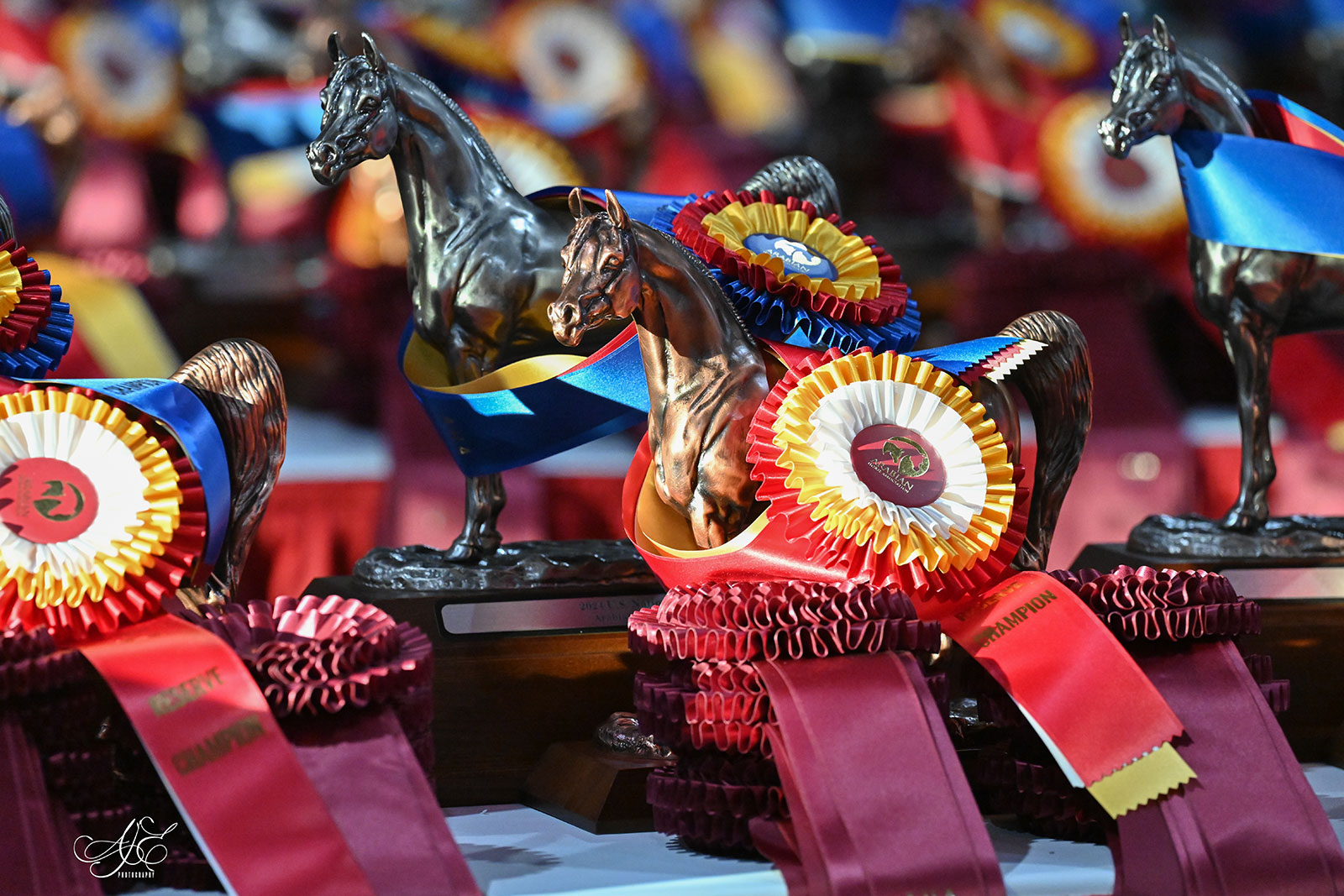By Brianna York
As featured in the Spring 2024 issue of Arabian Horse World
One of the most common questions asked by people who are new to the sport horse arena is “what the differences are between hunter type and dressage type classes?” These categories are applied to both the sport horse in hand classes and the sport horse under saddle classes. For people who are new to this aspect of breed showing, it might not be evident at a glance that there are notable differences between the two types.
Knowing what is being looked for in each of the different classes can help you to place your horse in the right sport horse classes at your next show. While some horses can show successfully in both divisions, many horses are more suited to one type than the other.
DRESSAGE TYPE

In this Dressage Type example, you can see the horse’s uphill balance and the higher set neck indicative of this type.

Our Dressage Type under saddle example demonstrates the balance expected of a dressage horse and shows clear uphill engagement and a higher neck position.
As defined by the AHA, this type of horse will have, “a higher set-on neck than the hunter type”. This kind of horse is further described as having movement that is, “free, elastic, active, and regular with good push from behind”. Another key aspect of the requirements for this type is that the horse displays a tendency toward having an uphill balance.
Owners should be aware that even if their horse competes in dressage and doesn’t show over fences, they might still be better suited for the hunter type classes than the dressage type classes. Dressage Today interviewed Scott Hassler in 2007 about the sport horse in-hand classes, and he stated that “for the trot, the energy needs to be higher” than the energy necessary for the walk. For some horses, being energized when being shown in hand is a significant struggle and can lead to them carrying a much flatter frame than they would demonstrate under saddle.
In the under saddle classes for dressage type, both snaffle bridles and double bridles are allowed, and horses of all levels are presented together. Horses will still be expected to demonstrate the training necessary to compete in the dressage arena, even if they are only being shown each direction on the rail. Often the question of whether or not your horse should show dressage type or hunter type is as simple as whether or not they naturally display an uphill balance, demonstrate elasticity and cadence in their gaits, and are willing to perform in the appropriate tack happily.
HUNTER TYPE

This Hunter Type in-hand example has a flat topline and displays a level frame.

The Hunter Type under saddle example shows a flat, ground-covering way of carrying itself and a lower neck set.
According to the AHA descriptions of the types, hunter-type horses should, “carry a more level frame than the dressage-type horses.” These horses are also expected to display a more natural self-carriage and they should cover ground. The definition for the type states that the movement of these horses should be, “long and low with good push from behind, free of tension, and showing good balance”.
Hunter type classes tend to be mostly populated by horses who show over fences or horses who are crossover entries from the western and ranch divisions. When asked about the appearance and presentation of the hunter jumper horse, Practical Horseman described the hunter type horse as a horse with, “excellent manners, and efficient and comfortable gaits”.
Hunter type horses will be ridden in jumping-style or all-purpose saddles, and should be exhibited in proper, legal tack for the hunter jumper ring. The AHA rulebook states that you cannot mix types of tack between dressage and hunter-type horses in the sport horse under saddle and that hunter-type horses will be shown in a hunter-type bridle (AR183.1).
Many people who show in the sport horse division elect to exhibit their horses in the sport horse classes that pertain to the horse’s day job. This means that if you show your horse over fences, you will likely have your best success exhibiting them in the hunter type under saddle and in-hand classes. If you show dressage, you will likely want to show your horse in the dressage-type in-hand and under saddle classes.
Ultimately, you might have to try showing in both divisions a few times to determine which of the two types your horse most closely resembles. Splitting the types at shows allows for fair, accountable judging and ensures that horses are being exhibited properly for the kind of work that they are trained to do.






